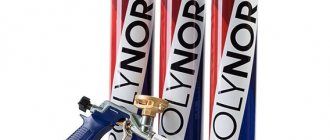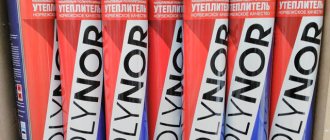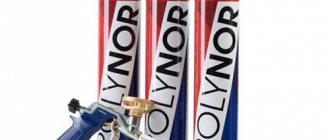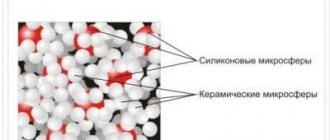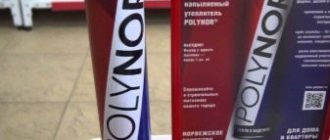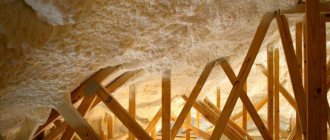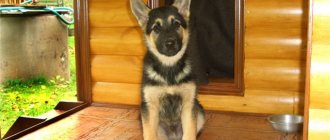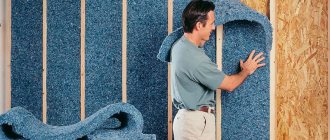Possibility of using foam fillers
Balloon thermal insulation , although better than its analogues in all respects, was not widely used in the past due to its high cost. And the use of such insulation was limited by the need to use special equipment, which, due to its price and complexity of development, is practically inaccessible outside the professional sphere. Much simpler and more profitable, although not always more convenient, was the use of mineral wool and polystyrene boards, which are made by extrusion.
Then manufacturers began to produce sprayed insulation in compact-sized cylinders, which led to a reduction in the cost of the method. To spray such a mixture of steel, complex installations and specialists in thermal insulation finishing are not needed, since the material itself is filled into small containers and the possibility of manual spraying is provided. Each cylinder is designed to cover one square meter of base (layer up to 60 mm thick). One person can process up to one hundred square meters per day.
As a result, calculations showed that working with insulation such as Polyno
r is much more profitable in terms of labor costs , costs for the materials themselves and surface preparation.
If a professional team of workers charges up to one and a half thousand rubles for insulating one square of wall, then using Polinor insulation with the same amount of material, you need to spend only about 500 rubles. You can work independently, which eliminates the need to look for experienced workers, reduces finishing time, and saves money. The choice of thermal insulation of this type remains the only optimal option that is available to people without special training. Foam can be used to create insulation for foundations, basements, walls inside and outside buildings made of brick, stone, concrete, and blocks. This option is also suitable for thermal insulation of non-load-bearing coatings, including floors on joists, as well as pitched roofs and attic floors.
Since Polinor is suitable for application to bases made of almost any material, it can be used as thermal insulation for plumbing fixtures and sewer pipes or fittings. In such cases, foam insulation in cylinders can be used indoors or in open areas. There is only one limitation on the use of balloon thermal insulation, which is that the material cannot be used to foam voids. It can only be applied to a dense base.
Features of installation of sprayed thermal insulation
In terms of the complexity of arranging insulation, Polinor foam insulation differs from rolled and slab thermal insulation materials for the better.
Using PPU Polinor can perform thermal insulation of any surfaces: horizontal – floors, flat roofs; vertical and inclined – walls, facades, roofs; and objects with complex shapes - water supply pipes, well caissons, etc.
Insulation with Polinor can be done by one person, without the need for any outside help. Foam thermal insulation is produced in compact cylinders containing enough insulation to cover one square meter (based on the thermal insulation thickness of 6 centimeters).
It is worth noting that such packaging has a positive effect on savings, since it is extremely simple to calculate the number of cylinders required to insulate an object, knowing their productivity.
Before starting thermal insulation with Polinor, it is necessary to carefully prepare the insulated surface. The wall, floor, or roof of the house is cleaned of dust and mechanical impurities.
If any damage is detected in the structure of the house, the defects must be eliminated to prevent their further spread. In case of cracks in brick, concrete, or gas silicate walls, the damage must be repaired with a mixture of glue and cement.
Next, the insulated surface is degreased using any organic solvent - acetone, toluene, 748. This must be done due to the fact that Polinor’s adhesion to an oily surface is much worse than to a clean brick wall.
Preparing the Polinor mounting gun
The PPU cylinder, before starting work, must be stored at an air temperature of 18 to 30 degrees. Before application, shake the container for 2-3 minutes.
Thermal insulation is sprayed using a special gun, which must be purchased separately, since it is not included with Polinor cylinders.
Together with a polyurethane cylinder, you will receive a universal nozzle that controls the flow and supply of PU foam, which allows you to spray Polynor with any foam gun.
It is necessary to mount the nozzle onto the barrel of the gun (until it clicks), after which the cap is removed from the end of the cylinder, after which the gun rod is screwed into the PU foam cylinder, which is in a vertical position.
As a rule, the thickness of the Polinor thermal insulation layer should not exceed 6 centimeters. The foam flow rate is regulated by the pressure of the release handle of the mounting gun. The cylinder itself must be shaken every few minutes of operation (you need to hold on to the cylinder itself, and not to the mounting gun).
When spraying thermal insulation, it is necessary to strictly adhere to safety regulations, since uncured polyurethane foam can cause harm to the human body.
Polyurethane foam can cause irritation to the eyes, mucous membranes, and areas of the skin that it comes into contact with, therefore, installation of Polinor must be carried out in a protective suit, or, in the absence of special protection, use construction glasses and gloves.
Thermal insulation of attic walls with Polinor
Product reviews
Victor, 29 years old, Rostov:
I used Polinor for thermal insulation of the attic floor. The insulation proved to be excellent, both in terms of ease of installation and thermal insulation properties.
To cover 45 square meters of a room, cylinders worth 22 thousand rubles were required, which is significantly cheaper than other insulation materials of comparable quality. I recommend!
Oleg, 39 years old, Moscow:
The first time I dealt with Polinor thermal insulation was about two years ago, and since then it has been my main insulation material. I have already completed the thermal insulation of a house, a cottage outside the city, and a brick garage. All that remains is to insulate the attic. In my opinion, there is no thermal insulation with a better price-quality ratio.
Features of applying Polinor thermal insulation (video)
Calculate the insulation of your home
Material characteristics
Polyurethane foam (PPU) looks like a homogeneous structure of foam material, consisting of air bubbles filled with gas. Various versions of polyurethane foam are deservedly popular because they can be manufactured directly on the construction site. The most common method is to apply the material to the surface by spraying. Spraying is used for thermal insulation of houses, industrial workshops, pipelines, and in addition, it is actively used in the interior of premises.
Filling is used when it is necessary to fill a cavity between walls or a gap between installed finishing layers.
The thermal conductivity coefficient of the material is 0.023-0.025 W/mS. Teplis heat insulator is lightweight and can be easily applied to surfaces made of any materials (concrete, brick, glass, wood, aluminum, PVC).
Thanks to the optimal ratio of open and closed cells in the structure, the insulation “breathes”. Accordingly, the treated surface always remains clean and dry.
Other product benefits include:
- resistance to temperature changes;
- environmental friendliness;
- duration of operation (at least 20 years);
- seamless application, eliminating the formation of cold bridges;
- good sound insulation;
- low flammability;
- immunity from harmful rodents and insects.
Teplis polyurethane insulation is sold in 1 liter cylinders. Included with this product, the manufacturer offers to purchase a mounting gun with nozzles for uniform spraying.
Basement of a house with sprayed insulation applied
Comparisons of POLYNOR with other insulation materials
POLYNOR (polynor) - can be compared with many materials and insulation materials, but we will focus on the most basic ones.
We consider the economics or the true cost of insulation
When choosing any product or building material, the question always arises regarding the price/quality ratio. I would like to do everything efficiently, relatively inexpensively and not return to this issue for a long time. When insulating, it is not enough to choose the insulation you like based only on the cost and its physical and chemical properties, but you also need to understand what additional costs will arise during the work. Let's consider this using the example of traditional insulation materials: polynor, mineral wool, expanded polystyrene and polystyrene foam for an insulation area of 100 m2.
The thermal conductivity coefficient of Polynor thermal insulation is 0.023 W/(m*deg.). This is the minimum indicator among the insulation listed above! The number of closed cells is 70%. Based on this and similar parameters for other insulation materials, the thicknesses required for insulation, all other things being equal, were determined:
Mineral wool -15cm.
Accordingly, the required volume and cost of the material itself (at Leroy Merlin prices as of December 5, 2014):
Polynor - 5m3 (or 100 cylinders) X 325 rub. = 32500 rub.
Mineral wool (Ursa Terra 34PN, 50mm.) - 15m3./70rub. per m2. RUR 21,000. Expanded polystyrene (URSA XPS, 50mm) - 13m3. /224 rub. per m2. 58240 RUB. Polystyrene foam (PSB-S15U, 1x0.6x0.03) - 15 m3/36.3 RUB. per m2. 18150 rub.
Now let's move on to the second part of the question - additional costs for installing thermal insulation, the cost of work and delivery of insulation materials to the construction site.
Transportation. Polynor is produced in cylinders with a capacity of 1 liter, the covered area is 5 cm thick. is 1m2. For 100 m2 you will need 100 cylinders or 9 boxes. Transportation costs are insignificant, unlike other compared insulation materials. Their transportation requires special transport.
Cost of work. Polynor is a high-tech material, there are no requirements for the preparation of the insulated surface, it does not require lathing or vapor barrier, any person without special skills can apply PPU insulation. As a rule, construction company prices for work are 90-100% of the cost of the material itself, but this does not apply to the Polynor brand. You can apply it yourself or negotiate at your own discretion (maximum 30% of the cost of the material).
At Leroy Merlin prices as of 12/05/2014:
Vapor barrier Izospan, roll 70m2-950rub/piece.
Hydro-windproof membrane Izospan AM, roll 35m2-30 RUR/m2.
Mounting adhesive Tytan Prof Classic Fix - 139 RUR/pc.
Cost of thermal insulation materials per 100m2
hydro windproof membrane
The cost of the required materials was calculated based on the amount of materials used:
- Edged board: distance between logs 1 m. Board section: 0.02X0.08m. Cubic capacity: 100X0.02X0.08=0.16m3. Cost: 0.16m3X7000rub.=1120rub. 1a. This section of the board when insulating Polynor is necessary and sufficient to ensure the solidity of the entire insulated structure as a whole, eliminates the temperature gradient, cold bridges and moves the dew point outside the insulated plane.
- Lathing + counter-lattice: Cell format - 0.6X1.2. With this format, the amount of timber per 100m2 is 25 pieces with a length of 10m. Section of timber: 0.05X0.15m. Cubic capacity: 250X0.05X0.15=1.875m3. Cost: 1.875m3X7000rub.=13125rub.
- Vapor barrier: Cost: 100m2-1360rub.
- Hydro-windproof membrane: Cost: 105m2-3150rub.
- Assembly adhesive: 17 pcs x 139 rubles = 2363 rubles.
Mineral wool: 5-7 years (further absorbs moisture and becomes deformed)
Expanded polystyrene: PPS_JSC JV Tigi Knauf _ GOST 15588-70_13 years EPPS_NPP "Expol"_TU 2244-001-17953000-97_34 years EPPS_ZAO "Khimich. Plant"_TU 2244-002-17953000-95_16 years Eps Flomate_ "Dow Chemical"_DIN 4108_37 years Eps Roofmate_ "Dow Chemical"_DIN 4108_40 years Foam plastic: at least 30 years Polynor: 45 years
Thus, to summarize: we see that Polynor is in the middle price segment between mineral wool and expanded polystyrene, but in terms of the totality of all costs for arranging thermal insulation, durability and transportation, it is confidently in the lead.
Description and characteristics
Polinor is produced in a liquid state and applied to the surface by spraying. This popularity of the material is not caused by chance, because it is characterized by the following advantages:
- Fast drying. The surface becomes hard after 1 hour.
- Unaffected by rodents and insects.
- Does not form cold bridges.
- Does not harm the human body.
- There is no need to buy expensive equipment for application.
- The material is characterized by high efficiency.
- Has a long service life.
- The structure of the material is closed cells that do not allow water or steam to pass through.
- The material is self-extinguishing if there is no direct influence of fire.
In the photo - liquid insulation in cylinders Polinor
Polinor is not without its disadvantages, which include:
- A surface made of Polinor is resistant to direct influence of UV rays and constant contact with water, and the process of applying the material must take place at a temperature of 15-25 degrees.
- When working with insulation, you must adhere to safety rules using a mask and respirator.
Compared to existing analogues of liquid thermal insulation for walls, Polinor insulation is significantly different. First of all, the changes concern the structure, or more precisely, the percentage of open and closed cells in the solid mass. This criterion is very important, as it affects the level of thermal conductivity, moisture absorption and water permeability. Using Polinor, you can get about 70% of the cells, while when using similar sprayed products, the number of closed-type cells will be only 30-40%. However, it cannot be used as a seal for interior doors.
On the video, liquid insulation in cylinders Polinor:
The material in question has the lowest thermal conductivity among all the insulation materials that are available on the domestic market today. For example, mineral wool has a thermal conductivity coefficient of 0.045, expanded polystyrene – 0.033, and Polinor – 0.023 W/m2* °C. Thanks to these properties of the heat insulator, it is possible to reduce its consumption. One cylinder will be enough to treat 1.2-2.0 m2.
Sprayed thermal insulator Polinor can be applied at temperatures from -25 to +125 °C. If it is exposed to a temperature of 450 degrees, then its length will be deformed by 85%, and damage by weight will be 50%. The duration of its independent combustion will be 5 minutes.
Polinor is an environmentally friendly insulation material, thanks to which it can be used when arranging a residential building. The material has high adhesive properties to various surfaces, resistance to moisture, chemicals and aggressive environments.
Release form
Sprayed insulation has been known since 2013. It is a one-component self-expanding mixture with a closed-cell structure.
In construction stores, this thermal insulation is sold in cylinders similar to conventional foam for a gun.
It is applied in the same way as construction foam. According to reviews, one cylinder is enough for a 5-centimeter layer of insulation over an area of one square meter. The manufacturer's instructions state that the service life, in the absence of exposure to negative factors, will be at least 35 years.
Liquid foam
This type of insulation includes almost all foam materials based on polymer resins. The quality of the final product, including its environmental friendliness, largely depends on them. There are raw materials whose use is not permissible for residential premises due to the high toxicity of the polymer and its long-term emissions. At the same time, such materials are quite suitable for insulating technical structures or isolated building elements (if there is confidence in their insulation and the conscientiousness of the working specialists).
At the moment, such types of liquid foam as polyurethane foam, penoizol, as well as a number of products in compact cylinders are common.
Polyurethane foam (PPU)
Viscous heterochain polymers in a liquid state are used as the main component of this insulation. During chemical reactions, urethanes foam, which leads to their increase in volume by more than 50 times.
In its frozen state, polyurethane foam resembles ordinary polyurethane foam, the main difference in the structure is less porosity.
Mainly used for:
- Insulation of walls of frame buildings;
- Roofing structures;
- House facades;
- Thermal insulation of basements and lower floors.
To apply polyurethane foam, you need a special unit that first mixes and foams the insulation components, and then delivers the finished mixture under pressure to the surface to be treated.
Final polymerization occurs within 24 hours, after which the finishing can be installed. Polyurethane foam is suitable for treating surfaces made of brick, concrete, wood, metal, cinder blocks and gas silicate blocks.
The average cost of work including material is 1000-1500 rubles per m2 , with a layer thickness of 50 mm.
Penoizol
A budget analogue of polyurethane foam insulation, since it is based on relatively cheap, but more toxic urea-formaldehyde resin. The structure of this insulation is very similar to ordinary foam plastic, but its use is more preferable due to the absence of cold gaps in the insulating layer, characteristic of sheet and roll materials.
The density of penoizol, even in a liquid state, is noticeably lower than its urethane analogues, which does not allow its use in loaded structures. Otherwise, the scope of application is similar to polyurethane foam. Thermal insulation qualities are also not exceptional and are comparable to mineral wool, and two times less than that of the polyurethane foam described above.
Apply under pressure after pre-mixing the components and foaming. Increases in volume by no more than 30 times relative to the original mixture.
Roof insulation with foam insulation
Work together with the material costs approximately 2000 rubles per 1 cubic meter .
Polyurethane foam
The products are mainly used for processing seams between insulation elements. Polyurethane foam is relevant as a means for sealing structures; it is also used for fastening building and finishing materials to the base being constructed. In terms of operational characteristics, the resource has an average level of efficiency. Do-it-yourself polyurethane foam for insulating the walls of a house is produced in small containers; the products are presented in a wide variety of models. When applied, the composition expands 20 times. The material is easy to use independently; even an amateur can handle the job.
Polyurethane foam
Building materials in this category are attractive due to their versatility. Polyurethane foam as thermal insulation demonstrates a high level of efficiency. The PU foam composition has excellent properties of resistance to aggressive environmental influences. After foaming, the primary production volume increases 40 times. The presence of many microbubbles in a two-component compound determines the exceptionally low thermal conductivity coefficient of this foam insulation. The use of polyurethane foam for wall insulation involves significant costs, since the composition is applied using special equipment. The service life of polyurethane foam reaches 50 years.
Polyurethane foam for wall insulation
"Polinor"
This is a liquid insulation based on polyurethanes. A common form of release is small cylinders, similar in appearance to those for polyurethane foam. Using one cylinder you can insulate about 1 m2 of surface with a layer thickness of 6-7 cm.
The strength and thermal insulation qualities are similar to polyurethane foam, but unlike it, “Polinor” is more suitable for household use, since it does not require special equipment for application. The relatively high cost (about 500 rubles per cylinder ) makes its use inappropriate over large areas.
The insulation is applied by spraying, which allows it to be used on almost any surface, for example, for thermal insulation of pipelines located outdoors.
As for filling voids in the walls, this procedure cannot be completed due to insufficient pressure in the cylinder.
"Polinor" has the following technical characteristics:
- Thermal conductivity – 0.025 W/(m*K);
- Moisture absorption coefficient – no more than 0.03;
- No toxicity, non-flammable;
- Solid density – not less than 28 kg per m3;
- Retains all operational properties for 50 years;
- The operating temperature should not exceed +121°C;
In addition, the mixture is quite chemically stable and does not interact with most reagents common in everyday life.
Chloroform, dichloroethane, and high concentration hydrochloric acid have a negative effect (promote swelling) on Polinor. Nitric and sulfuric acids react with polyurethane, thus destroying the insulating mixture as a whole. Current prices for your city:
Advantages and disadvantages
Among the positive qualities are:
- insulation in cylinders called Polynor, unlike other heat-insulating materials, does not require the construction of a frame (we are talking about films, reinforcing meshes, and the like);
- it is convenient for them to work, especially if a hard-to-reach area or surface with complex geometry is being processed;
- to spray thermal insulation, you do not need additional equipment or an electrical connection;
- suitable for processing brick, wood, metal, glass and other surfaces;
- compared to traditional insulation, it has increased thermal conductivity;
- increases the speed of work. It will take no more than two minutes to apply a layer of 1 m2;
- low consumption. One 890 ml can of Polynor spray insulation is enough to cover a surface of 1 m2 with a thickness of 5 cm;
- the material hardens for an hour, after which other coatings, such as paint or plaster, are applied on top of it;
- as the manufacturer claims, the service life reaches 50 years;
- along with thermal insulation, it also provides sound insulation;
- will not become a “home” for rodents, who so love to spoil insulating materials.
Polinor - insulation in the form of foam for insulating walls in cylinders. Along with the advantages, this new generation material also has a number of disadvantages:
- direct solar radiation has a negative effect on it;
- will not last long if frequently exposed to moisture;
- restrictions during spraying. Namely, the temperature of the cylinder should be in the range from +18 to +35 degrees Celsius;
- toxic when used until dry. In this regard, personal protective equipment is required, that is, masks, gloves, etc.;
- when using for the first time, it is difficult to apply a layer of perfectly even thickness;
- as recommended by the manufacturer, the maximum layer thickness should not exceed 6 cm;
- after application, it seals the surface, preventing it from “breathing”;
- To work, you will need to purchase a construction gun equipped with an attachment.
Helpful information! As for flammability, Polinor is a self-extinguishing material, at least if it is not directly exposed to open fire.
The best manufacturers of polyurethane foam
The ranking of well-known manufacturers of polyurethane foam is headed by brands that have earned recognition in the construction industry.
Soudal
The brand has factories in Poland, Belgium and Slovenia. Soudal brand products provide a structure that meets high European standards and a good yield volume. The sealant does not darken or deform over time, and the durability of the product is impressive.
Krimelte
The manufacturer from Estonia (Penosil brand) offers a variety of models of polyurethane foam for various purposes. Krimelte products are known in the professional environment for their decent price-quality ratio.
Titan
The Orion brand, with production facilities in Turkey, Spain and Poland, ranks third in the popularity rating among polyurethane foam suppliers. Products of this brand foam well without secondary expansion.
Moment of installation
The products of a well-known brand are in demand due to their decent quality and availability of solutions.
Ultima
The brand produces good quality polyurethane foam, the products are easy to use. Judging by consumer reviews, the sealant of this brand does not have an acceptable level of efficiency.
Foam for wall insulation
Axton
The company produces a sealant with high odorless polymerization characteristics, while reviews indicate low adhesion and high porosity of the structure.
Titan02
The highly popular mounting foam Titan02 is available in a winter version and with increased fire resistance. The product demonstrates exceptionally high efficiency when installing window and door structures. It is actively used in the repair of utility systems, sealing and thermal insulation of buildings. Titan02 sealant is sold within 230 rubles.
Penosil
The product is distinguished by its density and uniformity of structure with a large output volume. It is used for installation of structures, filling seams and cavities of varying complexity. The model range also includes special versions for foam plastic. The cost varies from 220 rub.
Spray insulation PENOPLEX FastFix 850 ml
Sprayed one-component insulation - a universal one-component polyurethane aerosol spray - is used for insulation of building structures, domestic and commercial premises. Insulation can be applied to any surface, including vertical surfaces and surfaces with a negative slope (inner surfaces of roof slopes, etc.). Ideal for small spaces. It can also be used as an auxiliary insulation for application on uneven and geometrically irregular surfaces, as well as where it is technically difficult to use sheet insulation. Heat resistance (of fully cured adhesive foam) during long-term use: from -45°С to +90°С Area of one cover layer during continuous application (depending on the nature of application), m²: Up to 2.2
PROPERTIES:
- for external and internal work;
- due to its finer-cell structure, it has lower thermal conductivity than polyurethane foam and better insulating properties
- output volume after lifting the cap – up to 55 liters;
- the rise of one layer is up to 2.5 cm. It is recommended to apply in several layers. Apply the second layer only after the first has cured.
- temperature range of use – from -0 to +30 °C (at a cylinder temperature from +10 to +35 °C);
- operating temperature range – from -45 to +90 °C;
- complete curing time – 12 hours;
- after polymerization – chemically neutral, does not emit toxic compounds;
- resistant to mold and fungi;
- excellent adhesion to all surfaces, with the exception of fluorine plastic;
- does not contain ozone depleting substances or solvents.
SCOPE OF APPLICATION:
- insulation of walls, ceilings, roofs, basements, doors, building structures, etc. in premises for economic and domestic purposes;
- as an auxiliary insulation when using insulation from polystyrene foam, basalt, etc.
- ideal for insulating geometrically irregular surfaces;
- sealing gaps between thermal insulation elements;
- spraying on sheet materials to reduce vibrations and for sound insulation.
- can be used for comprehensive insulation of cracks, holes, joints together with mounting foam and mounting adhesive foam
Color: Bright orange.
TECHNICAL CHARACTERISTICS: Density of the finished product after spraying and polymerization, kg/m³ no more than: 16-20
Volume of the finished product after spraying and polymerization, liters: 50-55.
Lifting height of the cap of one layer, mm: Up to 25.
Surface drying time (to touch), min., no more: 15-20.
Curing time, min: About 60.
Complete curing time, hours, no more than: 24.
Time for possible further processing, min., no more: 90.
Thermal conductivity, W/mK: 0.025.
Recommended number of layers when spraying: 1-2.
Fire resistance class (DIN 4102-1): B2.
Receiving PPU
When mixed, polyol and isocyanate produce foam, which increases in volume and then hardens. During the manufacturing process, it is necessary to adhere to a number of requirements: maintain the required temperature and mix all components well, which makes it possible to obtain a polyurethane output that does not have seals and large air cavities.
If you change the production method, you get polyurethane foams that differ in their basic characteristics. Some are better suited for insulating openings for doors and windows, others for brick and panel buildings or pipelines. By changing the proportions of the ingredients, when mixing them, polyurethane foam with different cell sizes is obtained.
The most popular materials in this group are the following:
- Foam rubber. It is widely used in everyday life and is familiar to every person. It is used as an upholstery filler for upholstered furniture and lining material.
- Rigid polyurethane foam is used when performing installation work. It has been noticed that this insulation is negatively affected by acids and solvents.
DIY application technology
Applying liquid insulation does not require any professional skills or expensive equipment (with the exception of liquid foam). To work, you will need a roller (brush or spray). When using a roller, you will also need a container to evenly rub the mixture over its surface. The process itself includes the following steps:
- We prepare the surface (clean the walls from excess mortar, sweep with a brush and wash with water).
- We prepare the material (if necessary, dilute it to the desired consistency).
- Pour paint into the roller container.
- Dip the roller in paint and roll it out on a special area until the mixture evenly saturates the roller.
- We carefully apply the insulation to the wall, no need to press hard. The first layer is applied from bottom to top.
- Subsequent layers are applied after complete polymerization of the first, usually after 24 hours (to find out the exact values, see the instructions for the insulation).
When drying any of the layers, it is necessary to avoid getting them wet, since most liquid thermal insulators are water soluble. Because of this, the impact of water on insulation that has not completely hardened can cause its complete or partial removal from the surface.
Application technology - video instructions:
Consumption per 1 m2
As noted in the advantages, this insulation is quite economical. The consumption of polyurethane foam in cylinders is as follows: 1 liter is enough to cover a wall of 1 m2 with a layer 4 cm thick. For comparison, when working with mineral wool, you will need to spend more. In addition to the material, additional elements are needed for insulation, that is, sheathing, fasteners, etc., which also costs money.
Required layer thickness
It all depends on the region in which the object is located. For clarity, there is a table that indicates how thick the layer should be for a specific element.
How to choose from all the varieties
The choice of type of insulation depends on the situation, as well as the area of application; let’s consider some common cases in which foam insulation is used:
- You can use polyurethane if you need to repair cracks or eliminate other defects on the walls. Do not expose it to direct sunlight.
- To fill large volumes, use penoizol. In this case, it is necessary to purchase a special high-pressure apparatus, since a regular cylinder will not be enough for this.
- To seal cracks and thermally insulate a small surface area, select mounting samples in cylinders. It does not ignite when interacting with fire, does not support combustion, has an environmental composition and hardness after hardening.
Remember! Polyurethane foam is categorically not suitable for insulating the entire building, since it does not have the appropriate characteristics.
To eliminate defects that have been detected externally, foam, which contains polyurethane, is applied using direct method technology, using a machine or a special cylinder. Errors within the layer that foam insulation creates require a long hose to push the material through. To fill the air gaps inside the insulation, holes are made in the wall.
Features of insulation application technology
The technology for installing sprayed insulation in cylinders involves the following steps:
- the cylinder is equipped with a special tube or gun, having first removed the lid;
- shake the composition thoroughly for at least 60 seconds;
- before applying foam thermal insulation, the surface is treated with water;
- The cylinder is held with the bottom up, the voids are filled to 1/3 of the volume, leaving room for expansion of the composition.
When the foam fills the entire volume of the gap, it is recommended to sprinkle the mass with water to improve the polymerization process. Curing time for foam insulation varies depending on the model and brand, and manufacturers produce products of varying quality. Surface hardening is observed within approximately 20 minutes after spraying. Correction of the mass using a cutting tool begins no earlier than after 4 hours. The full period of polymerization of foam floor insulation in cylinders requires a period of at least 24 hours.
Providing protective equipment
When applying polyurethane foam in cylinders for floor insulation, it is worth considering that the composition is poorly washed off from skin and clothing. You should work in protective clothing; it is also important to use safety glasses and gloves. Manipulations of spraying polyurethane foam with special equipment are performed using professional equipment to completely eliminate contact of the skin and mucous membranes with the substance.
When insulating a floor with foam, you need to use protective equipment
Thermal insulation of the floor by spraying
Installation of polyurethane foam when insulating floors using spraying technology involves the use of special installations. The foam insulator components are contained in separate tanks. The working composition is prepared directly on site before use. Substances enter the mixing device, are then sent to a spray gun and applied under pressure to the surface to be treated.
Features of installation of foam insulation:
- a frame structure is constructed for applying spray-on thermal insulation. Experts recommend lathing depending on the nature of the area being treated. For example, for effective thermal insulation of a wall structure, it is advisable to build a wooden or metal frame with an interval between guides of 30 cm. If you plan to insulate the floor with sprayed polyurethane foam, you should create a sheathing in increments of up to 1 m;
- the foam composition is applied by smoothly moving the jet over the surface to ensure uniform distribution of the mass;
- when processing vertical planes, foam insulator is sprayed from the lower perimeter, gradually filling the openings upward;
- When manipulating, keep the spray gun at a distance of at least 25 cm from the surface to be treated. When moving to another sector, you must release the gun trigger to block the stream.
If you plan to insulate the floor with two-layer spray foam, it is necessary to allow time for complete polymerization of the previous layer. After the mass has hardened, adjustments begin: cut off all protruding fragments with a sharp knife and level out any unevenness.
The flooring is laid after the foam insulation has completely polymerized.
Floor insulation by pouring method
The technology involves creating monolithic thermal insulation in the floor structure by pouring foam into specially made cavities. For example, a rough plank floor is constructed on joists, and small holes are made on the surface in designated areas for pumping polyurethane foam. If thermal protection of walls is planned by pouring polyurethane foam, the cladding is performed with a technical gap between the base and the finishing material. Next, the foam composition is poured through special holes on the facing panel.
Filling is carried out on the basis of the same spraying installations, reconfiguring the equipment parameters. In a professional environment, special units are also used for pouring polyurethane foam, which determines the high-quality level of thermal insulation work. The foam substance exclusively fills all voids down to the slightest cracks, resulting in the formation of a sealed thermal barrier with high performance characteristics.
How to spray thermal insulation
Foam insulation is easy to apply , which does not require the involvement of significant labor or the use of complex installations or units. The use of such materials is allowed on vertical, horizontal and inclined surfaces (floors, walls, ceilings, partitions), as well as structures with complex shapes (decorative finishing, plumbing fixtures).
Even one person can apply insulation in cylinders. The lightweight cylinder can be carried, lifted and operated without noticeable effort. The volume of material consumed is calculated based on the available number of containers (1 cylinder = 1 sq. m of insulation).
Regardless of the surface area, time of year and other factors, the order of applying thermal insulation material is approximately as follows:
- Clean the base from dirt, remove dust and moisture accumulation.
- Repair damage to surfaces made of brick, concrete or wood to prevent further destruction of the base and insulation.
- Degrease the substrate with acetone or an available solvent to remove oil stains and improve adhesion.
- Prepare the gun for Polynor insulation by fixing the spray gun and removing the protective cover. Shake the container well before use. Before use, it is recommended to store the container at temperatures not lower than +18−30 ºC.
Polynor balloon insulation is equipped with a universal nozzle for controlling material consumption through the dosage of force on the handle. During the application of foam, the container must be shaken periodically to ensure better spraying. It should be borne in mind that before it hardens, sprayed thermal insulation remains harmful to health, so it is imperative to work in protective clothing, gloves, and goggles.
Which liquid insulation to choose?
As is known, long-term or improper storage significantly worsens the properties of materials, especially liquid insulation. In this regard, when choosing a composition, you should first of all pay attention to the date of its manufacture. In addition, it is recommended to give preference to well-known brands that have proven themselves, because the effectiveness of the entire thermal insulation system depends on the quality of the liquid insulation.
In order to ensure the quality of liquid insulation produced in the form of paint, experts recommend:
- Check the weight of the bucket - the lower the density of the composition, the higher its heat-saving properties. Therefore, if a ten-liter plastic bucket weighs more than 6.5 kilograms, then you should not purchase such a composition.
- Check the paint against light, as light microspheres rise up. Therefore, the thicker the top layer of insulation, the better its thermal insulation characteristics.
- Rub a small amount of paint with your fingertips - a good material should feel a large number of rough microgranules. The absence of such an effect indicates low quality of the product.
- Make sure the composition is white - a change in color indicates gross violations of the technological process. However, this rule does not apply to paints with mineral color additives.
It should be noted that in this case you should not focus on the cost of the product, since some manufacturers deliberately sell low-quality products at inflated prices in the hope that the choice stereotype will be triggered.
Reviews
Those who have used this insulation system have shared their opinions. Read the reviews on forums and construction sites that we have collected:
Airat
I read reviews about Polynor. I decided to try it myself too. The base was insulated with PP. I wanted to seal the seams with Polinor. It was sprayed well, the yield of material from the cylinder was almost 100%. But it is important to pay attention to the expiration date. I blew out one balloon, then went to buy a second one in another store. I used half of it, and then some kind of sludge started to appear. I took a closer look, and it was already past the expiration date. So you need to pay attention to this. But overall, I’m happy!
Natalia
It was necessary to insulate the loggia. I decided to look through the Polynor reviews on the forums. I liked it. I bought it from Leroy, received instructions and applied it myself to 12 squares. I'm happy with the result. At the end of autumn, being on the loggia is as comfortable as being in the apartment itself. The only thing is that when spraying, foam particles fly in the air, so you need to cover everything.
Sergey
The apartment is on the first floor. I decided to insulate the floor from the basement so that the cold wouldn’t pull in from below so much. I've heard about spray-on insulation. I googled reviews about Polinor insulation and decided to try it. In about 3 hours I foamed the entire required area (about 36 sq.m.). I liked everything, I just need to ventilate it, otherwise I might collapse from the stench. It is difficult to ventilate a basement, so the speed of work was a big plus.
After using Polynor insulation, you can leave your feedback in the comments below.
Advantages and disadvantages of liquid insulation
Among the positive qualities are the following:
- Possibility of application to surfaces with almost any relief;
- Resistance to atmospheric factors;
- Low cost of installation work;
- Liquid insulation forms a monolithic layer, without joints that occur when using sheet materials.
- There is no need to coordinate the insulation with the supervisory authorities, since after application the appearance of the building remains unchanged;
- The high adhesive properties of liquid insulators eliminate the need for careful surface preparation;
Flaws:
- If storage and transportation rules are not followed, there is a high probability of premature loss of the mixture’s performance qualities;
- Short service life compared to traditional insulation;
- High cost of some products;
- Many foam materials cannot be applied without special equipment;
Is it possible to insulate a house with foam yourself?
Most often, they carry out work related to the internal insulation of the house with their own hands. For this you will need:
- Wood slats or metal profiles as guides for sheathing.
- Construction gun and balloon foam.
- Knife with a sharp blade.
The surface to be treated must first be cleaned of dust, cobwebs, mold and other contaminants. Then you can begin fixing the sheathing profiles. The gaps between them should be 50 centimeters. They are mounted vertically on the wall, additionally fastened with horizontal jumpers at the same distance. If there is furniture left in the room, it is recommended to cover it with film. The eyes are protected with goggles, the body and hands are protected with a suit and gloves, respectively. The further procedure looks like this:
- It is recommended to treat the construction gun with automotive lubricant.
- The can is inserted into the gun, and you can begin treating the surface with foam.
Installation of metal or wooden beams
Before installing the sheathing, the surface will need to be prepared - remove cobwebs and dust, remnants of the old finishing coating, cement, etc. A deep penetration primer is applied to the cleaned surface with a roller or spray. It will create a thin protective film.
The slats or profiles are fixed in increments of 50 centimeters, installing horizontal jumpers to increase strength also every half meter. Depending on the base material, suitable hardware is selected. These can be anchors or dowels
Before installing the insulation, it is important to provide in advance places for laying electrical cables or other utilities
Spraying foam using a compressor
First of all, the heat insulator is applied to problem areas - with cracks, joints and crevices. In this way, it will be possible to get rid of voids that could become cold bridges in the future. Next, the voids are filled in those places where the sheathing is adjacent to the insulated surface. You need to spray the polymer insulation from side to side, movements should be sweeping and even. They are produced from top to bottom. When treating a metal surface, it is recommended to pre-clean it from rust, as well as treat it with a corrosion-preventing agent.
It is important not to allow the sheathing to be completely covered with the composition.
Drying
The material begins to foam while still inside the compressor. Once applied to the surface, it will harden in approximately 15-20 minutes. It will take at least a day to dry completely, and if the layer is thick, then three days. It is recommended to begin final finishing after five days.
Alignment
Before finishing, the surface must be carefully leveled. It will be enough to cut off the excess frozen foam with a sharp knife. The heat insulator must be flush with the sheathing beams
It is important that the coating is smooth, without bumps or depressions. Sometimes it can be difficult to work with just one knife
Then you can use a hacksaw with a fine tooth. After all manipulations, the finishing material can be fixed to the surface.
Finishing
Foam insulator is not suitable for subsequent plastering, puttying, or wallpapering. Here is a list of suitable facing materials:
- plasterboard sheets;
- panels made of wood, glass or plastic;
- wooden lining;
- OSB or fiberboard sheets.
Application
It is allowed to use Polinor insulation both inside and outside the house. At the same time, make sure that it is not directly affected by sunlight and moisture. The installation process is very simple and quick, and even an inexperienced person can cope with the task. All that is required is to install the container on the spray foam gun.
But before this, it is important to properly prepare the surface. It must be cleaned of dust, dirt and moistened with water. The process of applying foam is performed with smooth movements, without jerking. Thanks to this, you can obtain a uniform layer of insulation. Polymerization occurs through reaction with moisture. If you additionally moisten the surface, the composition will be more voluminous. Rubber door seals can provide additional insulation.
Video showing the use of sprayed polyurethane insulation polynor:
In addition, the material becomes lush even at a temperature of 20 degrees. But at a temperature of 15 degrees, the composition becomes dense. The material can be applied both to the frame and to the wall. The choice of a particular method depends on the subsequent cladding.
The following options are provided:
- applying paint;
- applying a layer of plaster;
- use of drywall, OSB, lining, siding.
Polynor insulation is sprayed on in several layers. It can be used not only for thermal insulation of walls, but also floors and roofs. It is often used when insulating various metal tanks and communications.
The sprayed composition is able to pass through all cracks and hard-to-reach places, forming a monolithic seamless layer. It will not allow heat, steam and moisture to pass through. The material should only be applied with gloves and safety glasses, as it has a strong and pungent odor. It is very difficult to be in an unventilated room, but after installation the smell disappears very quickly.
You may also be interested in learning about which insulation for external walls under plaster is best to use.
But this information will help you understand what a wall pie of a frame house with basalt insulation is and in what cases it is used.
What are the characteristics of mineral wool insulation and where can it be used and how exactly. This video explains it in great detail.
And this information will help compare the thermal conductivity of insulation materials.
This article will help you understand what Energoflex water supply pipe insulation is and where it is most often used.
Practical instructions for insulating houses with foam insulation
Video of equipment operation and home insulation
Here there will be only practical information on how to insulate a house with any urea foam without consequences
Even when you officially order insulation of your home with foam insulation, it is important to understand for yourself how this is done correctly. After all, private houses and walls are different, the size of the layer, the strength of the masonry are different, and you need to immediately navigate and adapt to each house
I have heard questions on the phone many times... - Aren’t you going to destroy the house?! I have never destroyed a single house. Sometimes, it was necessary to carefully pour penoizol into walls that were swayed by hand. How to do it? Everything is in the video course.
More than 30 people from all over the CIS have already done GZHU and are insulating their houses according to my instructions!
Russia
: Moscow and St. Petersburg, in Bryansk, in Krasnodar, Voronezh, Stavropol, in Chelyabinsk, Samara, Novosibirsk, Perm, Omsk, Kirov, Ufa, in Rostov, Tyumen, in Belgorod, Barnaul, Armavir, Krasnoyarsk, in Ekaterinburg, Taganrog, in Nizhny Novgorod, Saratov, Izhevsk, Stary Oskol, Astrakhan, Tomsk, Kemerovo
Ukraine
: Kiev, Donetsk, Lugansk, Kharkov, Simferopol, Dnepropetrovsk, Vinnitsa, Zaporozhye, Krivoy Rog
Belarus
: Brest and Mogilev
Kazakhstan
: in Almaty and Kostanay
Consumer properties
Like any insulating material, Polynor has a number of advantages:
- Features excellent heat conservation. These insulation indicators are higher compared to expanded polystyrene and mineral wool.
- Non-toxic. Consumer reviews about Polinor are quite good, since it is not poisonous and does not require protective equipment when using it.
- Ease of use. When using POLYNOR, a heat-insulating layer is created, which does not require a frame for fastening. Also, no tools or auxiliary materials are required.
- Excellent grip. The composition quickly adheres to any surface - brick, wood, plastic, stone, concrete, which significantly expands the scope of its application.
Polynor insulation is very popular due to the fact that it is applied by spraying. This affects better adhesion of different surfaces, even if they are not very smooth. Very often this insulation is used to finish hard-to-reach places, for example, where pipes or cables are laid.
Professional advice and customer reviews
Over several years of use, Polinor insulation has already managed to win admirers. Many professionals who have been using polyurethane foam for a long time have given their preference to the new product. It is noted that it is extremely easy to install, fits perfectly on any surface and has good characteristics during operation. Thermal insulation occurs quickly and at a high level.
It is also noted that the material is extremely toxic, so you should take precautions and protect yourself with special suits, gloves, respirators and goggles. If foam gets on the surface of the skin, rinse it thoroughly and consult a doctor.
Also, consumer reviews note that Polinor insulation is quite expensive in cost, but this factor should not be decisive when choosing insulation. The speed of application and excellent characteristics will allow you to save significantly on heating the room in the future.
The material is extremely toxic, so precautions should be taken
Professionals also often prefer this material. Its light structure and ease of application can significantly reduce the time and money spent on installing insulation.
